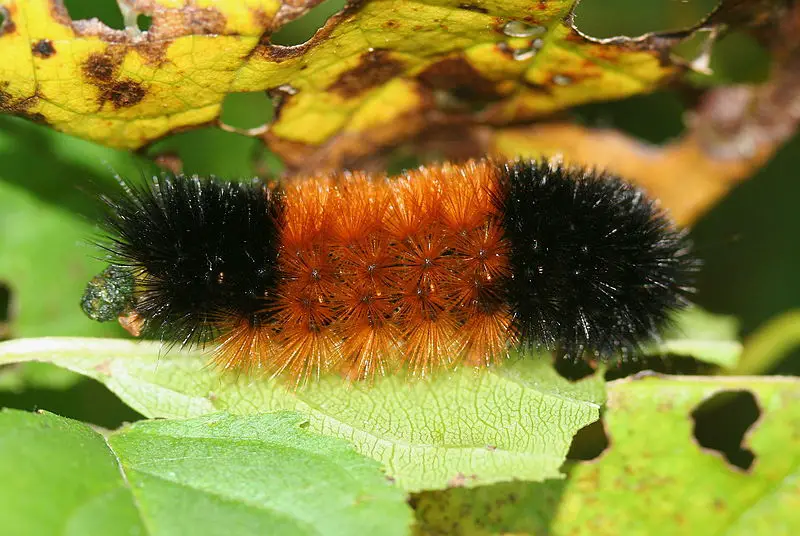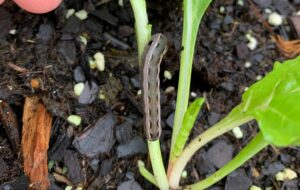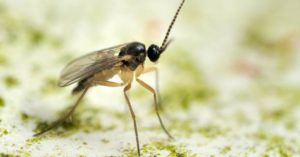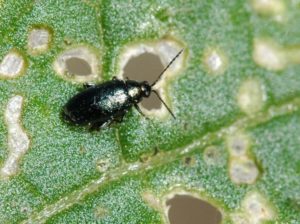You have probably heard of the groundhog from Pennsylvania named Punxsutawney Phil who is said to be able to predict winter’s duration depending on whether or not he sees his shadow. But have you heard of the Woolly Bear caterpillar who can also make predictions about winter’s severity?
Much like Punxsutawney Phil’s shadow, the Woolly Bear’s black and copper-colored bands are said to be able to predict the harshness of the coming winter. If the copper bands located in the middle are wider than the black bands on each end, the winter will be mild. On the other hand, if the black bands on the end are wider than the copper ones in the middle, the winter will be more severe.
The belief about the Woolly Bear’s ability to forecast the weather was popular during the 1700s. But it experienced a renewed interest among the public in 1948 when Dr. Howard Curan, the curator of entomology at the American Museum of Natural History, conducted an experiment at Bear Mountain, New York. Dr. Curan made a prediction for the coming winter based on the fifteen specimens of Woolly Bear he found there. The prediction was reported by the New York Herald Tribune. The publicity generated by the report made the Woolly Bear caterpillar and its predictive powers famous once again.
What is a Woolly Bear Caterpillar?
Woolly Bear caterpillars, also known as Woolly Worms, Fuzzy Bear caterpillars, and Hedgehog caterpillars because of the way they curl up when startled, are the larval stage of the Isabella Tiger moth. This beautiful yellow-orange moth with a 1 1/2″ to 2″ wingspan and three longitudinal rows of black spots on its abdomen, is indigenous to southern Canada, the United States, and northern Mexico.

The Woolly Bear will find shelter under a pile of leaves, a log, or any other quiet, dark place where it will hibernate for the winter. Its body will create glycerol, which acts as an antifreeze to protect the interior of its cells, while the exterior freezes from the winter conditions. In the spring, it will thaw, if you will, and continue to feed on plantain, lamb’s quarter, clover, dandelion, grasses, weeds, and nettles. Of course, it will also feed on the leaves of the plants in your garden, but it is considered to be a mild defoliator. Before long, it will form a cocoon where it will pupate. Approximately two weeks later it will emerge as a nocturnal moth. The cycle will continue when the eggs, laid by the female moths, hatch during the summer.
If you see a furry caterpillar that is completely black or one that is completely white, although they are “furry,” they are not the same species as the Woolly Bear caterpillars.
Truth or Legend?
While the Woolly Bear is a fascinating creature, what we really want to know is, can this two-toned caterpillar truly predict the weather? For those who want to believe in the Woolly Bear’s magic, you may want to stop reading at this point because what I am about to write may cause you to run to Punxsutawney Phil! Contrary to the popular myth, there is a scientific explanation for the caterpillar’s changing colors. The so called wool is actually stiff bristled hair that covers the thirteen segments or bands of the 1 1/2″ long caterpillar. Typically, the bands on both ends are black, while the bands in the middle are copper. The number of black or copper bands will vary depending on the caterpillar’s age, species, and how long it has been eating. The caterpillar will molt six times during its lifespan, and the number of copper bands will decrease as it matures and not because of the approaching winter.
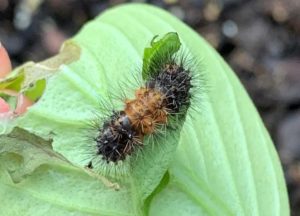
While there are many types of caterpillars, like the cabbage worm and the cabbage looper, that cause defoliation, there is nothing quite like the Woolly Bear. This caterpillar is what legends are made of.
Thank you for reading this article! If you found it helpful, please consider sharing it with others on social media!
